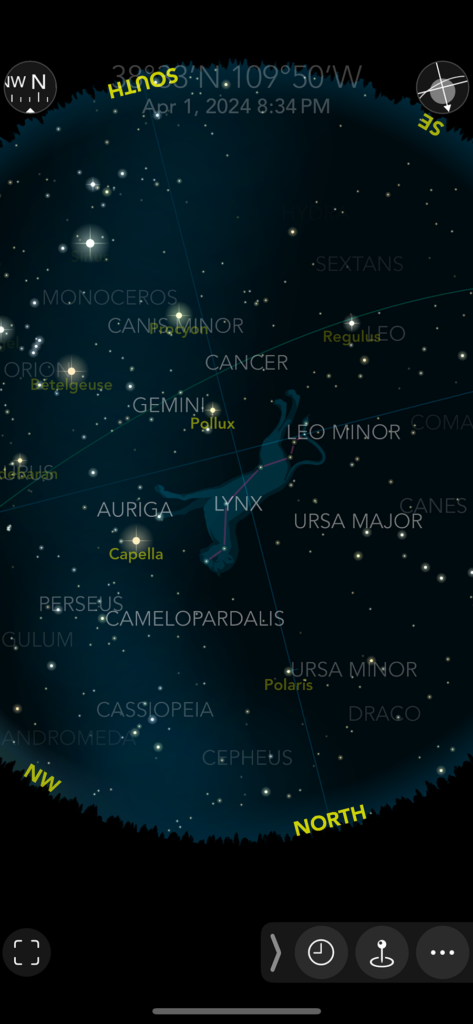Favorite apps and resources to get to know the stars and other celestial objects
Cover photo courtesy Shallan Knowles
My introduction to stargazing came from friends of my parents who knew about constellations and how to find them. I was gifted a book, a flashlight with a red light, and took an occasional tromp out into a field with a sleeping bag to learn a few constellations. Though the iconic Orion is still an easy find, the other constellations I learned have slipped from my memory over time. Now, with the advancement of our pocket computers, we can search the night sky with astronomy apps to learn more about the little dots of light we see.
Night Sky Apps
Camping can be an excellent time to learn about the night sky, as we are often away from lights. This year, to keep spring break from being a TV fest with our 9-year-old, we headed south to the Moab, Utah, area to ride mountain bikes. Our BLM boondocked camp spot provided for a perfect view of the sky and an opportunity to test out a few of the many apps available to better understand the stars and planets we can see.
The first app we used was SkyView Lite, which is the free version. When holding the app to the sky, you can see both your surroundings and the planets and stars above you. The feature I loved about this app is the option to tap to learn more about what you are seeing. On this night, Jupiter was just coming up as the sky turned dark. When clicked, the planet turns large and information about the object is displayed at the bottom, telling us that one day on Jupiter is about 10 hours long. These little tidbits of info are easy to understand and create a richer experience. However, the app can show so much info so that it’s confusing, such as two planets, a satellite, the horizon line, the path of said planets, the time of night and a constellation over the top of what’s currently happening in camp, making it less kid-friendly or tough for the distractible.

The free Sky Map app provided a better representation of the constellations, with lines and graphics. This app is a complete representation with the direction and large stars highlighted along with the constellation that has been touched. It is easier to navigate and softer on the eyes. Both apps were fun to play with to see the night sky and helped connect kids and adults with the twinkling stars and not-so-twinkling planets above our camp.
Spokane Falls Community College Planetarium
To start as a sky explorer, consider heading to the Spokane Falls Community College planetarium. About once a month (paused during summer break) they show a short movie about space. But the best part is before the film when professor of astronomy John Whitmer introduces the audience to that evening’s night sky. His introduction will orient the viewer to true north, certain constellations, planets and the moon.
If you are able to catch a show at the SFCC planetarium, be ready for an informative experience. After entering the circular room, you can slide into a reclining chair as the warm light bathes you. Once the show starts, the dome ceiling puts on a 3D viewing experience that takes you right into outer space. (The effect can cause motion sickness for the sensitive.) Shows run one weekend per month with a special movie for younger kids. This May 17-19 SFCC is showing “Solar Superstorm.” Showings are only $7 per person or less with a student ID.
Looking at the stars in a dark night sky fills the mind with a sense of the vastness of space, wonder and the reality of how small our human existence is compared to the Milky Way and the universe beyond. Summer skies and camping provide a great opportunity to contemplate our place in the cosmos. Take advantage of technology, find a spot in the dark sky, gather the kids or adult friends, and take a visual tour of the visible galaxy.
Shallan Knowles is the creative director and publisher of Out There Outdoors. She is looking forward to lying on the dock on a warm summer night to listen to the water and watch for shooting stars.













